3313Views 17Comments
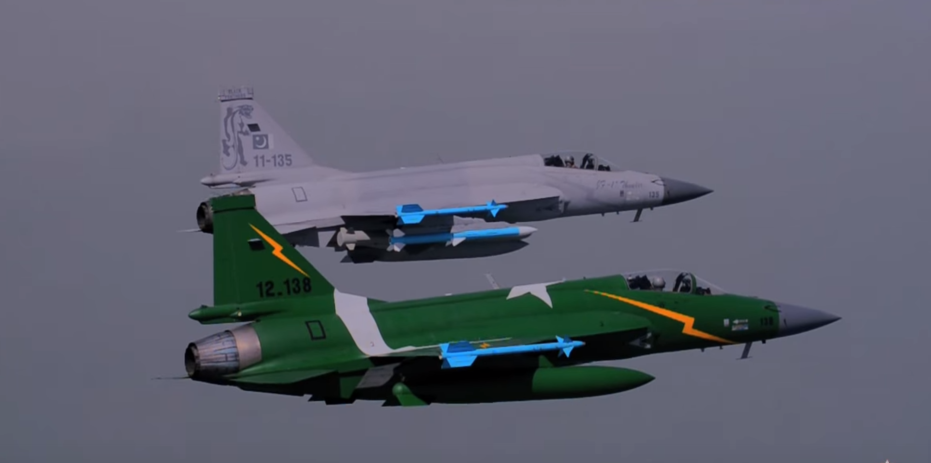
Could the JF-17 Thunder help South Africa? (Part 1)
01 February 2016
By Bilal Khan
It is no secret that Pakistan has been looking to generate market momentum for the JF-17. With a confirmed sale to Myanmar, a probable sale to Nigeria, and a possible (but insecure) lead in Sri Lanka, it seems the JF-17 is beginning to make in-roads in the market of developing world air forces.
But there are challenges. As discussed in an earlier article on Quwa, Pakistan does not have the political and financial clout to displace today’s incumbent defence hardware vendors. In the face of the U.S. and its armada of surplus F-16s or even Sweden with its line-up of second-hand JAS-39s available for lease, the JF-17 runs the serious risk of being shut-out from markets that – while more difficult to attain – are the most rewarding in terms of long-term commercial relationships.
Countries such as Egypt, Morocco and Azerbaijan (among others) could make use of the JF-17, especially as a means to replace legacy lightweight fighters or to build quantitative capacity, but in order to entice them, Pakistan would need to package the JF-17 as a truly serious and worthwhile contender. Yes, the story about not being anywhere near as sanction-prone as a Western platform or not being encumbered by political-strings is a good aspect, but it is only one aspect.
In tandem with attractive cost-savings, the Pakistan Air Force (PAF) needs to guarantee the availability of current-day as well as emerging technologies, especially in the areas of air-to-air and air-to-surface munitions. The ideal country to offer the goods and present them with a compatible story — i.e. piercing the limitations of sanctions, managing defence in parallel with structural developmental issues (e.g. poverty), understanding the realities of a developing country — is none other than South Africa.
The benefits South Africa’s support would bring to the JF-17 are obvious (and will be studied in part-two), but the question of how the JF-17 benefits the South Africa, namely its leading defence vendors (e.g. Denel and Paramount Group) ought to be explored. First, it is worth looking at Denel Dynamics’ impressive range of air-to-air and air-to-surface munitions.
The A-Darter is a fifth-generation within visual range air-to-air missile (WVRAAM). According to Air Vice Marshal Arshad Malik (see: “JF-17 Thunder: Pakistan’s Multi-Role Fighter” written by Alan Warnes), the Chief Project Director of the JF-17, the A-Darter is under consideration for use on the JF-17 Block-III. Equipped with an imaging infrared (IIR) seeker and thrust-vectoring nozzles for high-maneuverability, the high-off-boresight (HOBS) AAM is similar in concept to the Raytheon AIM-9X. The A-Darter can be paired with a helmet-mounted display and sight (HMD/S) system, which would allow the pilot to track and engage a target through the use of eyesight.
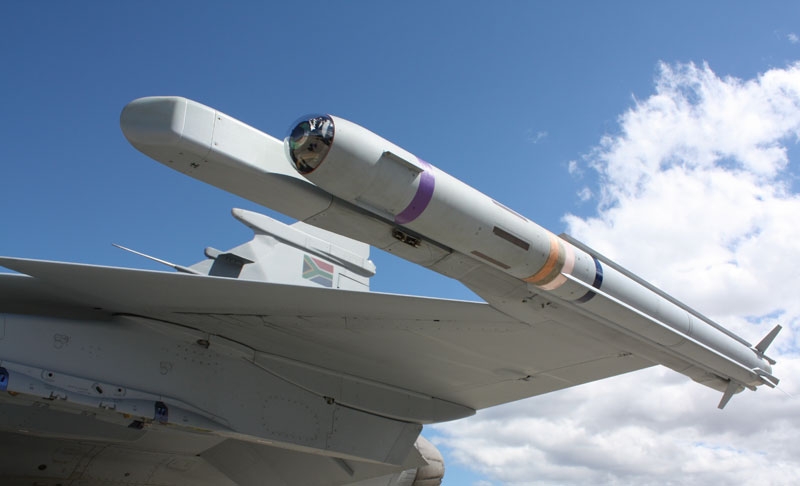
The Raptor-II is a stand-off precision-guided glide-bomb. Derived from the 60km Raptor-I, the Raptor II can be guided by a satellite-aided inertial navigation system (INS) or an electro-optical (EO) system, such as IIR. It also uses a rocket-booster, giving it a range of 120km. The improved Raptor-III incorporates the EO seeker alongside satellite-aided inertial navigation system (INS) with mid-course data-link connectivity. The Raptor series is marketed as a solution for attacking high-value targets at extended ranges.
While the Raptor is a compelling solution, it would be interesting if Denel developed a new variant modelled on the concept of the AGM-154 Joint Stand-off Weapon (JSOW). While such a system may not be capable of carrying heavyweight warheads like the Raptor II (which could carry 600kg), this system could be used to deliver guided sub-munitions, making it a good wide area attack munition. Interesting note, the Raptor-I and II are produced under license in Pakistan by the National Engineering and Scientific Commission (NESCOM). They are designated as H-2 and H-4, respectively.

The Umbani (also known as the al-Tariq in the UAE) is a modular precision-guided bomb (PGB) kit designed for Mk-8x series (e.g. Mk-81, Mk-82, etc) of general purpose bombs (GPB). Through the addition of large tail fins, as well as a guidance system, the Mk-8x GPB becomes capable of hitting targets with a substantially increased degree of accuracy (within 3 metres CEP according to Denel). The user could pair the bomb with a range of guidance systems, e.g. satellite-aided INS, IIR with automatic target recognition (ATR), and laser. Optional glide-wings and a rocket motor could extend the range of the bombs to over 100km, transforming them into precision-guided stand-off munitions.
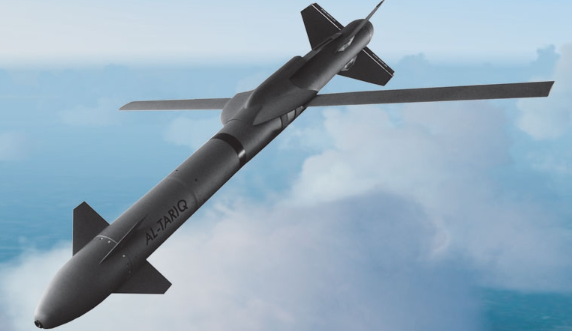
The Mokopa anti-tank guided missile (ATGM) is another interesting system, though its connection with a fast jet fighter platform such as the JF-17 may not be clear at first. Equipped with a laser-guided seeker and capable of travelling up to 10km, the Mokopa is Denel Dynamics’ equivalent to the AGM-114 Hellfire II. Denel clearly has the competency to extend the range of the missile and pair it with an IIR or even a millimeter wave (mmW) terminal seeker. This could make it a somewhat similar solution to the Brimstone AGM. Such a munition could enable the user to engage ground targets, including moving vehicles, with a very high degree of precision. A single JF-17 hardpoint could also carry two to three of these missiles.
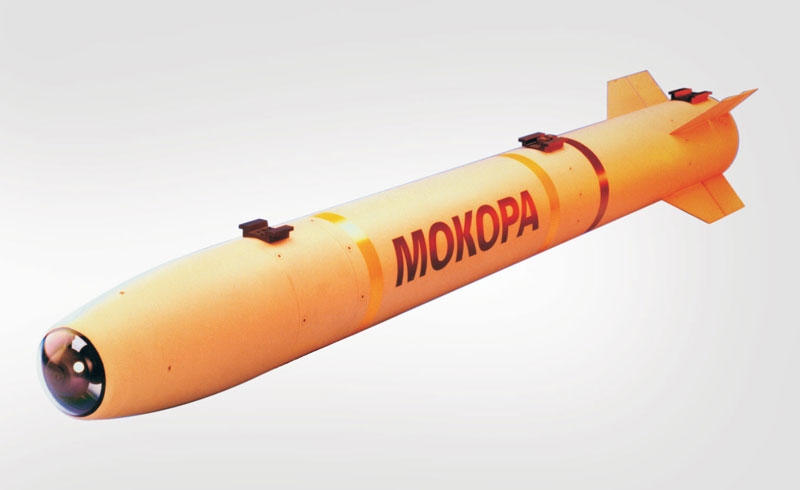
The Marlin beyond visual range air-to-air missile (BVRAAM) is currently under development, and it is being aimed as a solution for air, land and sea-based platforms. In other words, it is also being designed to serve as a surface-to-air missile (SAM). The active radar-guided BVRAAM is expected to have a range of 100km. In addition, the Marlin’s seeker has been designed to effectively engage in simultaneous multi-target tracking as well as possess increased electronic counter-countermeasures (ECCM) capabilities. The latter aspect will help the Marlin withstand the effects of modern radar-jamming and seeker-fooling techniques. While a technology demonstrator, Denel hopes to eventually evolve the Marlin into an actual product.
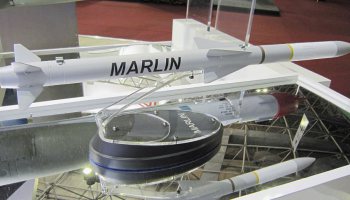
While not an openly marketed product (yet), Denel Dynamics’ air-launched cruise missile (ALCM) technology is another area to keep an eye on. In the context of an export-oriented fighter, Denel’s expertise with ALCM technology enables it to develop a sound export-focused solution. Imagine if the company developed a MTCR-compliant ALCM that could double (via an IIR or active radar-seeker) as an anti-ship missile. This would essentially be the Denel equivalent to the Taurus Systems GmbH KEPD 350.
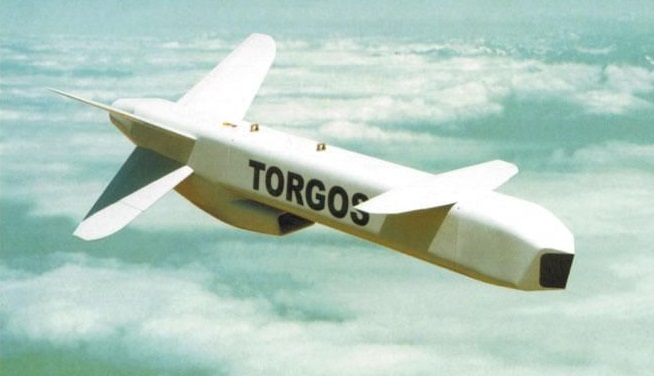
Denel Dynamics has a striking line-up of munitions, but it lacks a ‘native’ platform from which to market those goods. Yes, it could market its munitions in tandem with the JAS-39 Gripen or another platform, but with the exception of specific customers (such as Brazil), Denel would likely have to negotiate space with market incumbents (such as MBDA and Raytheon on the Gripen). The JF-17 on the other hand does not have that kind of attention, which leaves the space open for Denel.
Denel could market itself as the preferred JF-17 munitions vendor. It could inform prospective customers that not only are the weapon systems it has to offer technically sound and up-to-par with the offerings of industry leaders, but that they have already been integrated, tested and green-lit for use on a platform that is ready to be sold with relatively little in the way in terms of cost and other obstacles, such as political-strings and regulatory hurdles.
The availability of the JF-17 as a “ready-to-go” platform enables Denel Dynamics to access a wide set of markets. Not every air force is like the United Arab Emirates, i.e. with the capacity to study and integrate the Umbani onto an existing platform capable of properly using it (e.g. Mirage 2000-9). Air forces considering a new multi-role fighter to replace their MiG-21s, MiG-23s, F-5 Tiger IIs, Chengdu F-7s, Mirage III/5, Mirage F-1 and Kfirs would be delighted to know that they can access advanced munitions as well as a certified fighter off-the-shelf with relatively little hassle and cost.
Paramount Group could benefit from the JF-17 as well. If the JF-17 begins making serious in-roads, especially in Africa, the Paramount Aviation Academy could acquire several JF-17s for use as training and live demonstration aircraft. Not only could the company train new JF-17 customers, but also countries seeking to develop competencies in areas such as precision-strike or network-centric air-to-air warfare could make use of Paramount Group’s facilities and hardware.
As for the JF-17 itself, it is unlikely that the representatives of developing world air forces would find it easy to turn away from a fighter boasting advanced air-to-air and air-to-surface munitions sourced from a highly respectable vendor like Denel Dynamics. The PAF pilots manning the booths at Dubai, Paris and other leading venues could draw parallels with each one of Denel’s offerings (e.g. explain that the “Umbani is the JF-17’s equivalent to the JDAM and Paveway”), and subsequently push the fact that these capabilities are readily available. This will be explored in part-two, which will be published on Wednesday, stay tuned!

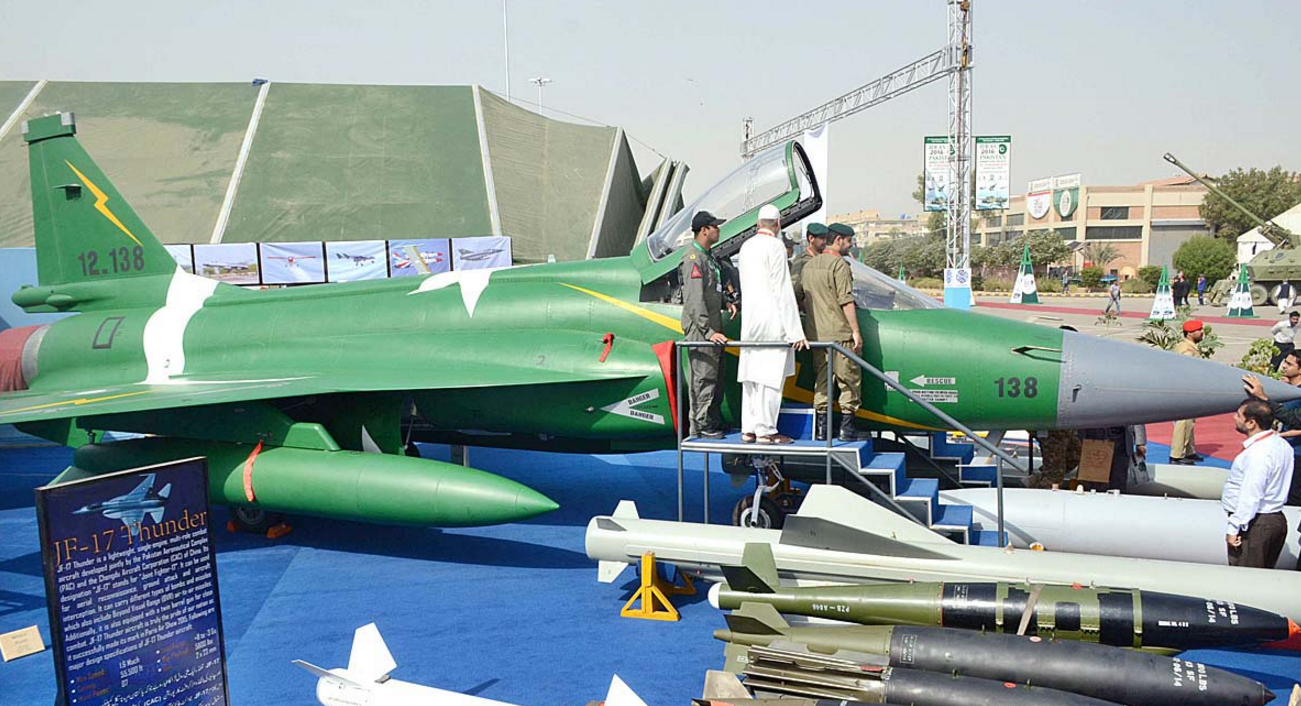
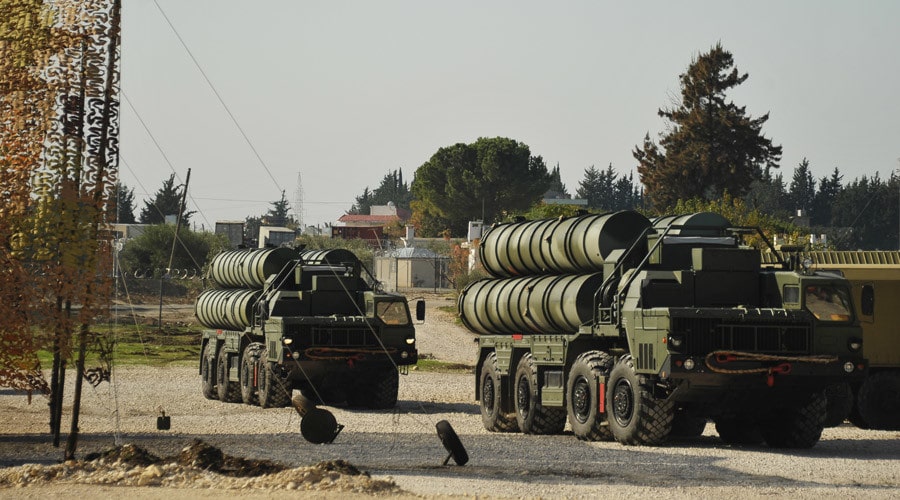
17 Comments
by Mohsin E.
Not sure about the Marlin… The Russians have taken the BVR game to another level with the K-77M (AESA seeker version of the R-77) which practically makes pulse-doppler seekers obsolete. I wonder if the Chinese are working on this already, as an upgrade to their SD-10 line. The Block 3 paired with such a BVRAAM would be a lethal package.
by Abdul Rashid
What would be the cost implications of an AESA seeker BVRAAM? Is the technology not forbidingly expensive? Would of course be great to have on the SD-10.
by saqrkh
Good thing the Marlin is a tech demonstrator, it’s possible Denel will return to the drawing board once AESA-tipped seekers enter service. The final product is a while away.
by saqrkh
Initially yes, the TRMs and enlarged power supply will make these BVRAAMs expensive, but the payoff is immense. An AESA-seeker could give you phenomenal ECCM capability as well as a large acquisition bracket (i.e. the range at which the seeker could go live with a chance to hit the target).
Even if each AESA-tipped BVRAAM were to cost $5mn, but if the targets it is able to nail are like Rafale ($250mn a piece), Su-30MKI, etc, then in relative terms it is quite cheap.
But as with most technology, these things will scale and become more common over time. I remember what a big deal it was to be able to acquire an active radar-guided BVRAAM, seemed revolutionary in light of the semi-active radar-homing seekers in AIM-7, Aspide, etc.
by Abdul Rashid
Sounds good. Would be nice to see a suitable AESA BVRAAM ready in time and integrated at the on set of Block 3 induction.
Eagerly awaiting Part 2 of your article!
by jigsaww
This is a good thought considering PAF is all willing to make up for lost deal with THALES by wooing Denel for JF-17 program in weapons area. Cost might be the only major issue here apart from certain question marks on these weapons, as the best of these are in development and will take another few years. The shift however in PAF is telling otherwise. I believe PAF has taken the route of chinese avionics and weapon systems as long as they suffice the requirements, and it looks like they are. As long as that holds true, PAF will not go all out for denel. Personally I would like these to be integrated on JF-17 block 3 along with chinese counterparts, but keeping our feet at ground, it’s mostly chinese weapons that will be employed by PAF. I do however support that the idea will be beneficial for JF-17 sales pitch.
Perhaps in part 2, you could bring focus on how denel outperforms chinese counterparts for PAF to seriously woo it?
by saqrkh
To be honest going into specific performance claims is impossible, there’s no information not any real world experience. What I can say, based on the facts, certain Denel munitions (such as A-Darter) are nearing operational entry, which can’t be said for the PL-11 just yet.
by Matthys Jacobs
AESA is incredibly expensive though and the cost to field AESA capable seekers are mind boggling.
The izdeliye 180 (The R-77 variant you refer to) requires massive changes to the missile profile as well.
Bare in mind that they are being developed to counter 5th Generation Aircraft such as the F-35 or F-22, they are not aligned with threats such as the Eurofighter or Rafale.
by Matthys Jacobs
I don’t think Denel will start off with an AESA seeker just yet since the costs would push up the price of the missile significantly.
Denel has always followed the old adage of giving 80% of the performance for 60% of the price.
by Matthys Jacobs
Denel can’t really out perform every missile in it’s class.
Where it can compete is technology transfer and price.
It offers 80% of the quality and performance of say a Western Missile but for 60% of the price as well as a lengthy transfer of technology.
by Matthys Jacobs
I don’t agree with you that AESA has become standardised.
Given the region where Denel is from, the likelihood of facing off against a Target like the Rafale is highly unlikely.
What would make a Denel product favourable to a Airforce like Pakistan would be the ability to have it coupled to a datalink or access to the code base to make software improvements or upgrading to specific to their region.
Having worked at Kentron (albeit decades ago), I would say that integrating the A-Darter and Cobra HMD technology and a SA Developed Datalink could essentially give the JF-17 and it’s edn users specifically Pakistan a force multiplier that currently does not exist.
I don’t think it’s possible for Pakistan to compete on a economical level with India’s acquisitions of high end fighters such as the SU-30 MKI and/or the Dassault Rafale.
This is the same problem faced by Sweden for an example when faced against the Soviet Union they chose to field one type of multi-role aircraft that could be built in large numbers, low operating costs but a long ended technological landscape in terms of capabilities.
The JF-17 offers the above, by only integrating Chinese or Russian munitions Pakistan shortens the capabilities to offer an alternative to other end users.
by Bilal Khan - Quwa
That’s true. I was looking at it from the prism of South Asia where AESA will eventually make an entrance, most likely with India first.
With the F-16 route being precarious on a number of fronts, it seems the PAF will double-down on the JF-17 Block-III, and I think securing a HOBS AAM will become a major short/medium-term priority.
The A-Darter is something we can integrate onto the
by Matthys Jacobs
AESA is incredibly expensive to maintain as well. The cost of that advantage it offers has to be questioned. From Sub Saharan Africa and my neck of the woods, AESA would not be useful since the only countries who could afford are North African/Arab countries.
South Africa is one of the leaders in HMD, having been a key design partner on the Cobra HMD used in the SAAB Gripen and the BAE Eurofighter Typhoon.
However, I can’t see South Africa approaching Pakistan and it would probably require Pakistan’s government to approach South Africa or Denel directly.
by Bilal Khan - Quwa
We’ve had a South African delegation visit the Ministry of Defence Production in February, but I agree, it’ll have to take Pakistan to start the process.
by Matthys Jacobs
It would be interesting to see if anything transpires but I doubt South African companies would be able to get a foothold given China being the regional ally of Pakistan.
I’d personally like to see more cooperation.
by Bilal Khan - Quwa
Pakistan’s approach is case by case. We have our fiscal constraints and there’s no doubt that Chinese systems have come a long way. But the air force does at times try its best to select the best system available where possible, regardless of whether it is Chinese or not. One example is the incorporation of an Indra ECM system on the JF-17 Block-II.
I see the A-Darter as one of those possible specific systems, as clearly alluded to by the Chief Project Director of the JF-17 (during the 2015 Paris Air Show):
“Selex is one of the competitors in the AESA requirement. A-Darter, LD-10 anti radiation missile, CM-102 anti-radiation missile, CM-400 anti-ship missile, range extension kits and other precision guided munitions will further improve the jet’s combat punch.”
by Matthys Jacobs
Quite interesting. Thank you.